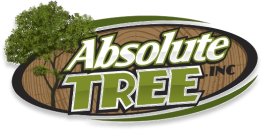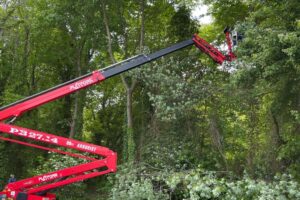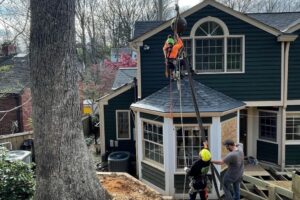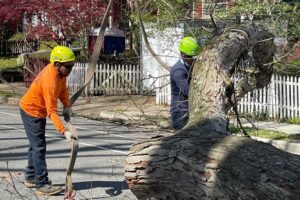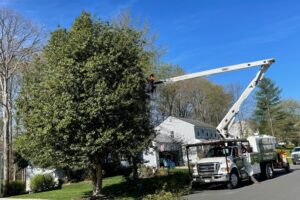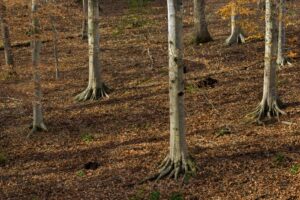We put this resource together to help property owners understand and identify types of tree diseases in Virginia, Arlington, Alexandria, Fairfax, Springfield, McLean, Herndon and the surrounding areas.
Keep reading to learn the most common tree diseases in Virginia, and where to turn to for treatment.
If you have any questions, or if you have a tree that needs treatment right away, call 703-969-6207 or click here to contact us with an online form.
Categories of Tree Diseases
Tree diseases can be broken into 3 main categories:
- Fungi
- Bacteria & Viruses
- Parasites
Within each of these categories there are assortments of different diseases (of varying severities) that can afflict your trees. Different species of trees are prone to different diseases. Let’s explore each disease category in more detail below.
How can I tell if my tree has fungus?
It’s important to note that not all fungus is hazardous to a tree’s health. In fact, some will actually benefit the tree. With that being said here are some signs to look for to see if your tree has fungus.
- Powdery mildew
- Tree cankers and anthracnose (dead areas and growths between live tissue and bark)
- Wilting leaves
- Tree rust (white, yellow or red spots on leaves, branches or trunk)
If you notice any of these signs, contact a tree care professional to ensure the fungus is not harming your tree. Treatments can typically be as simple as applying an anti-fungal agent.
How can I tell if my tree is infected with bacteria or a virus?
Did you know that trees get sick too? Viruses and bacteria are most commonly transmitted to trees through an external source (or vector), like an insect or even fungus.
Here are some signs to look for if you think bacteria or a virus has infected your tree.
- Leaf spots and yellowing
- Leaf scorch (dead tips surrounded with yellow discoloration)
- Stunted growth
- Slimy wetwood
Tree bacterial and viral infections can be treated with help from a certified arborist. Contact us today if you notice any of these signs with your tree.
How can I tell if my tree has parasites or pests?
Insects and trees live in harmony for the most part. However, when trees are weakened (like during a drought), certain insects can have a devastating effect on the health of a tree. Not only can they carry certain bacterias and viruses, they can eat and bore into the tree itself.
Bag worm, locusts, mites, aphids, gypsy moths and more can cause irreparable harm your trees.
Look for these signs if you think your tree may have a parasite or pest problem.
- Holes in or damage to the trees trunk and main branches
- White liquids oozing from damaged areas of tree
- Irregular “shiny” looking bark
- Sudden loss of leaves
While identifying pests can be easy, treatment can be difficult. Professional arborists will know how to eliminate the pests in a way that doesn’t harm the tree or other creatures that live on it.
Get A Free Tree Disease Estimate Today
If there’s one thing you noticed from this page, it’s probably that all three categories of tree disease have similar symptoms. To the untrained eye, it can be difficult to tell what is making a tree sick.
If you suspect that your tree is diseased, call 703-969-6207 today or click here to request a free tree disease assessment.
Absolute Tree Service, Inc. helps homeowners in Virginia maintain healthy, disease-free trees with innovative, environmentally friendly treatments that work. Contact us today to learn how we can help you maintain trees that add to the beauty and value of your property.
For the Absolute Best Tree Service in Northern Virginia, call Absolute Tree Today!
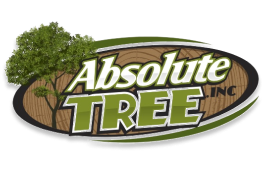
Author Profile: Ashley Davis
Over the last 19 years, Absolute Tree has grown a reputation as one of the premier tree service companies in the Northern Virginia areas. And there’s a good reason for this—we love trees and our passion for them shows. When you call on Absolute Tree for tree service, you aren’t just getting “some guys who cut down trees.” You’re hiring highly skilled arborists who understand the growth of trees and consider tree care an art form.
Stay Up-to-date!
Swing in each month for new articles, pest alerts, local resources, tree care tips, tree health updates, and landscape maintenance ideas
